John Hurrell – 28 February, 2023
Though these works occasionally come close to overkill with their density of slashing diagonals and wildly splashy surfaces that are almost granular with spilled droplets of colour and staccato vertical lines, this textural uber-abundance works because the pale background fields are so nuanced in their optical depth of surface. Such methodical and complex juxtaposing of icy planes creates a fascination that is immensely rewarding.
Koen Delaere is a Dutch artist who makes large dramatic tachiste paintings, rich in delicate relief, types of milky translucency, and thin splattery layers, combining many techniques of paint application and assorted mixed-in materials such as inks, paints and thickening binders. This is his first solo show in Aotearoa.
While classically gestural with their emphasis on arm movement with sweeping brushstrokes or vertically scraped cardboard, these deceptively complex paintings are much more than that. They are exceptionally rich in surface modulation with a dense range of freefalling drips, springled granular blobs, dramatic curved swathes and scattered striations.
Added is a churning plasterlike filler that extends out over the canvas edges, or spills down the middle; lumpy and curved, but also spiky and angular—accompanied also by thin slivers of brittle vertical strips projecting out and occasionally subdividing the picture-plane. The turbulent relief aspect is not overbearing or heavy handed, as it is carefully restrained as a foil for the dominant flat planes.
With the large scale works that tower over you, there is an impressive sense of paradox that some of their parts are so brittle. Their icelike pale fragility is a complete surprise, for these paintings revel in being material objects, made to be optically pored over, and naturally, never touched.
Delaere is an unusual colourist, often using a bed of tonally dark blue, criss-crossing diagonals—or violently slashing cascades of stringent yellow, dribbly orange, hot crimson, and dot peppered milky grey. Though small dark works, with glowing circular reds, are included, it is the very large, pale glacial paintings (rich in contrasting airy-but-earthy textures) that take your breath away.
From a distance they seem typically Ab-Ex, but close-up, the mixture of examining conspicuously gnarled, squirmy, projecting surfaces—looking through other, flatter, more glassy, subtly translucent, speckled planes—holds you near.
Though these works occasionally come close to overkill with their density of slashing diagonals and wildly splashy surfaces that are almost granular with spilled droplets of showered colour (juxtaposed with staccato vertical lines), this textural uber-abundance works because the pale background fields are so nuanced in their optical depth of surface. Such methodical and complex juxtaposing of icy planes creates a fascination that is immensely rewarding.
John Hurrell

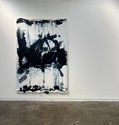
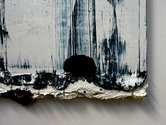


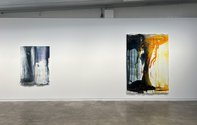
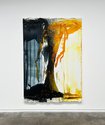

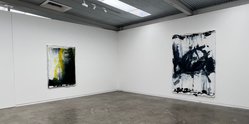


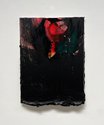



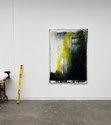

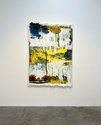
 Advertising in this column
Advertising in this column Two Rooms presents a program of residencies and projects
Two Rooms presents a program of residencies and projects



This Discussion has 0 comments.
Comment
Participate
Register to Participate.
Sign in
Sign in to an existing account.